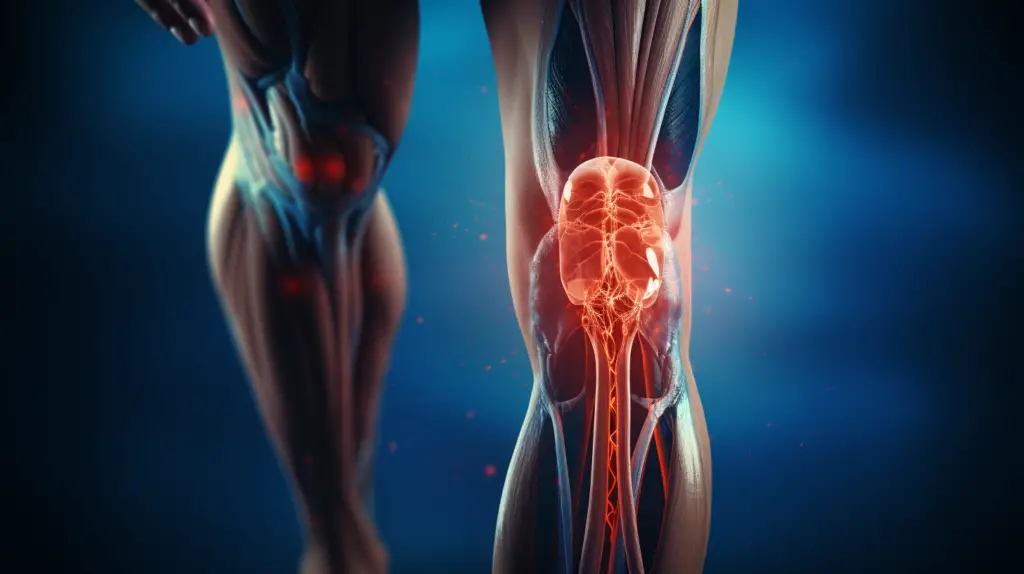The anterior cruciate ligament (ACL) is a key part of your knee that helps maintain stability during movement. Unfortunately, ACL injuries are common, particularly among athletes. While often discussed, there are many facets to this type of injury that the general public may not be aware of.

This article aims to shed light on 25 facts about ACL injuries and provide all the essential information you need to know.
1. Understanding the ACL: The ACL is one of the four primary ligaments in the knee, along with the posterior cruciate ligament (PCL), medial collateral ligament (MCL), and lateral collateral ligament (LCL). Its primary function is to prevent the tibia from sliding out in front of the femur and provide rotational stability to the knee.
2. Prevalence: There are estimated to be between 100,000 to 200,000 ACL ruptures per year in the United States alone. They are particularly common in sports that involve sudden stops and changes in direction.
3. Sports and ACL Injuries: High-risk sports include soccer, basketball, skiing, football, and gymnastics due to the high impact and rapid change in directions associated with these activities.
4. Gender Disparity: Females are more likely to suffer an ACL injury than males, due to differences in physical conditioning, muscular strength, and neuromuscular control. Hormonal differences might also play a role.
5. Age Factor: While ACL injuries can occur at any age, they are most common in individuals aged between 15 and 45, largely due to the higher participation in physically demanding activities.
6. ACL Tear Symptoms: A “pop” or a “popping” sensation in the knee, severe pain, inability to continue activity, rapid swelling, and loss of range of motion are common symptoms of an ACL injury.
7. Diagnosis: ACL injuries are typically diagnosed through physical examination and imaging tests, including X-rays, MRI, and ultrasound.
8. ACL Strains and Tears: ACL injuries can range from minor strains, which might heal naturally, to complete tears, which usually require surgery.
9. Non-Surgical Treatment: Mild ACL injuries can often be managed with rest, ice, compression, and elevation (RICE). Physical therapy can also help strengthen the knee and restore function.
10. Surgical Treatment: For severe ACL injuries, particularly complete tears, surgery may be necessary. This often involves a graft to replace the torn ligament.
READ MORE: 25 Interesting Facts about WWE (World Wrestling Entertainment)
11. Recovery Time: The recovery period after ACL surgery can vary widely, typically between six months to a year. However, return to sports could take longer, depending on the individual’s healing and rehab progress.
12. Rehabilitation: Rehabilitation after an ACL injury is crucial. It typically involves exercises to restore strength and mobility to your knee and gradually getting back to your regular activities.
13. Prevention: Proper training and exercise can reduce the risk of ACL injuries. This can include training to improve technique, such as landing mechanics and cutting movements, and strength training, particularly of the core and leg muscles.
14. Bracing: Some athletes choose to wear a knee brace after an ACL injury or surgery. While it may provide a sense of stability, research does not definitively show that a brace prevents further ACL injury.
15. Re-Injury: There is a risk of re-injury after an ACL tear. Young athletes are at the highest risk, especially those who return to high-level sports.
16. Psychological Impact: An ACL injury can have significant psychological impacts, including fear of re-injury, which can affect an individual’s recovery and return to sport.
17. The Role of Genetics: Recent research suggests a potential genetic component to ACL injuries, with certain gene variants appearing more common in people who have experienced an ACL tear.
18. Climate and ACL Injuries: Surprisingly, weather conditions such as climate and altitude may influence the risk of ACL injuries, though more research is needed in this area.
19. Success Rate of ACL Surgery: Studies show that approximately 80-90% of individuals return to pre-injury level of activity following ACL reconstruction surgery.
20. The Impact of Other Knee Injuries: An ACL injury can often occur in conjunction with damage to other structures in the knee, such as the meniscus, which can complicate treatment and recovery.
READ MORE: 25 Interesting Facts and Controversies About the FIFA Women’s World Cup
21. The Importance of Patient Education: Comprehensive education about rehabilitation, recovery, and the risk of re-injury can improve outcomes and patient satisfaction following an ACL injury.
22. Return to Sports: An athlete’s return to sports after an ACL injury is a complex decision that depends on the individual’s recovery, confidence, and the specific demands of their sport.
23. Long-term Consequences: Some individuals may experience long-term effects after an ACL injury, including the development of osteoarthritis in the injured knee.
24. Research Continues: The field of ACL research is continually evolving, with ongoing studies focusing on improving surgical techniques, rehabilitation strategies, and injury prevention.
25. Every ACL Injury is Unique: Just like every individual is unique, so is every ACL injury. Treatment and recovery can depend on a variety of factors, including the severity of the injury, the individual’s overall health, and their personal and athletic goals.
READ MORE: 25 Interesting Facts About Netball and the Netball World Cup
The anterior cruciate ligament plays a crucial role in maintaining the stability of the knee. Understanding the facts about ACL injury can be beneficial, whether you’re an athlete, a fitness enthusiast, or an individual interested in this prevalent medical condition. Whether prevention or recovery, the key to successful outcomes often lies in awareness and understanding.


